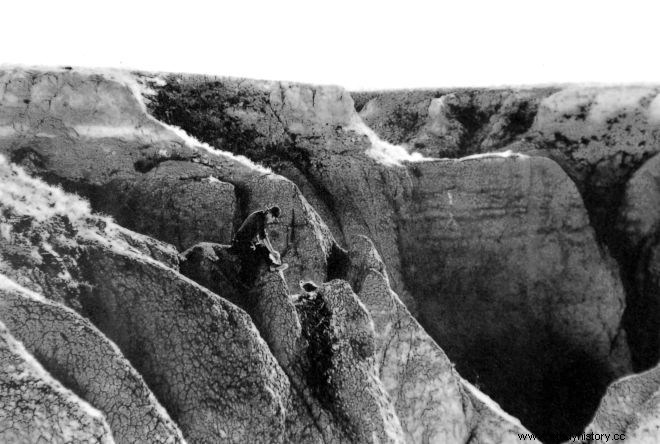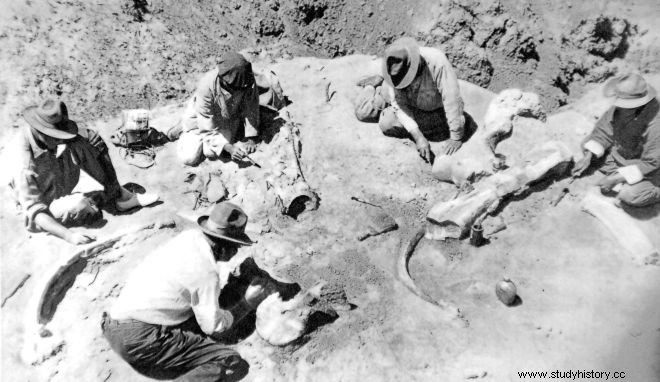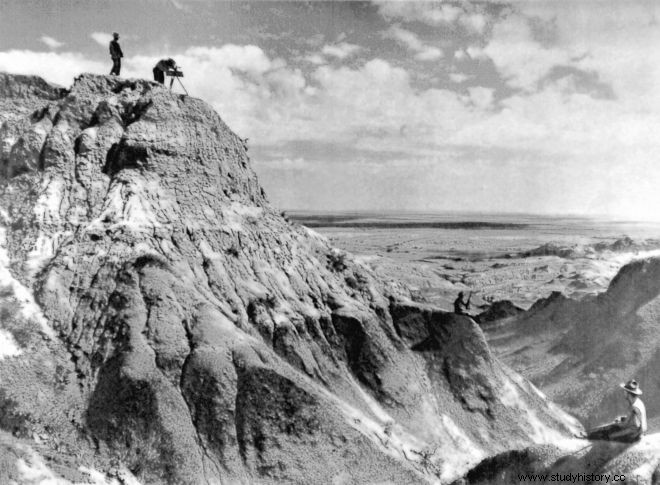Nick Rennison's book, "1922 - The Year That Changed the World" , brings the landmark year of '22 back to life by focusing on its special significance. The Ottoman Empire collapsed after six centuries. The British Empire began to crumble. The Soviet Union was founded while Mussolini's Italy was becoming the first fascist state. Greece was plunged into mourning with the Asia Minor Catastrophe. Tutankhamun's tomb came to light, the use of insulin caused a revolution.
On the 320 pages of the publication, you will visit month by month the most important events that marked their time, but also the developments that determined the global reality in the decades that followed.
The NEWS 24/7 secured excerpts from the book published by Dioptra and presents them to you every month.
The new excerpt is about Roy Chapman Andrews and his great life.

The story goes that Andrews led the first expedition of the American Museum of Natural History in New York to the Gobi Desert in Mongolia, in the 1920s. The expedition discovered dinosaurs, including Protoceratops, Oviraptor, Velociraptor, and the first dinosaur egg nests with chicks.
Roy Chapman Andrews also loved revolvers and was afraid of snakes.
He was also thin but muscular and used to appear at the excavation site with a broad-brimmed hat and a pistol. He recorded in his diary that he often used his gun, and his adventures largely inspired film metaphors such as Indiana Jones, as they were not too far from fiction as he recorded them. After all, the scientist tried to build and maintain his own celebrity status in every way (he always had camera crews with him and carefully directed the recording of discoveries), while modern archaeologists consider that the greatest explorer of the time was Walter W .Granger as well as Percy Fawcett of course.
He wrote that his life was full of violent incidents with antiquarians and treasure hunters. "In the first fifteen years of field work, I remember at least ten incidents where I escaped death in the chuck," he said. After all, his biography was entitled Under a Lucky Star.
In his chronicles he wrote about hurricanes, his boat being overturned by a whale, being attacked by a pack of wild dogs, attacks by fanatical local priests, and even wrestling with pythons. As of course, and battles with thugs and gravediggers.

Read the exclusive excerpt from "1922 - The Year That Changed the World":
April
"If there was a role model for Indiana Jones, it might be Roy Chapman Andrews.
Andrews was born in Wisconsin in 1884, and his career rivaled in everything but the unbridled imagination the path of the adventurer and archaeologist of the George Lucas films. He began working for the American Museum of Natural History at a very young age and traveled to various wild parts of the world, from the East Indies to the Arctic, in search of specimens for the museum's collections. He had found what he wanted to do with his life.
I was born to be an explorer
"I was born to be an explorer," he later wrote. "I couldn't do anything else and be happy... The desire to see new places, to discover new facts – curiosity about life – has always been an indomitable driving force within me." During World War I, he and his wife, the photographer Yvette Borap, spent long periods in the most remote areas of China as the head of another expedition to find rare zoological specimens.
By 1920 Andrews had embraced the “Out of Asia” theory of human origins. , which has now been debunked and which claimed that modern man first appeared not in Africa but in Asia. He was determined to find evidence to verify her.
Andrews knew Mongolia and its capital, then known as Ulaanbaatar, from a visit in 1918. He had found the country fascinating for its "violent contrasts and glaring anachronisms". Ulaanbaatar was, he later wrote, a place where "cars pass caravans of camels, which have just come from the vast, lonely expanses of the Gobi desert" and where "holy Buddhist lama monks, in fire-red robes or in bright yellow, they walk side by side with black-robed priests".
The Gobi desert was also, he believed, an ideal place to look for traces of ancient people that would substantiate his theories. He was determined to search to find them.
In 1922 the American Museum of Natural History gave him this opportunity, along with financial support. Andrews traveled to Beijing to organize an expedition.
On April 17 he and his team left the Chinese capital and began the journey to Mongolia and the Gobi Desert. Evidence for his ideas about human origins turned out to be chimerical, but the expedition made several important discoveries. Bones of previously unknown prehistoric mammals were unearthed from the sand.
The following year, Andrews' team unearthed eggs that were first identified as belonging to dinosaurs. (Giant fossilized eggs had been found in the 19th century, but had been mistakenly identified as the eggs of extinct birds of enormous size.)

In all, Andrews led four more expeditions to the Gobi in the 1920s. His reputation in the years that followed sometimes suffered, because of his love of using the popular bestselling books he wrote, in order to exaggerate both the importance of his findings and the dangers he faced in the search to locate them.
"The water, which was up to our ankles, was up to Roy's neck," commented one of his colleagues.
However, there is no doubt that Andrews was a very important figure in the history of palaeontology and contributed to a better understanding of the prehistoric past".

The version description:
1922 was a year of great upheaval.
The events that happened then defined the rest of the twentieth century and in many cases continue to affect us even today, a full hundred years later.
The Ottoman Empire collapsed after six centuries. The British Empire began to shake, from Ireland to India.
New states and new polities emerged. The Soviet Union was founded, while Mussolini's Italy became the first fascist state.
And Greece was plunged into mourning with the Asia Minor Catastrophe...
Tutankhamen's tomb came to light, the use of insulin caused a revolution in medicine. And in Munich a young demagogue named Adolf Hitler was briefly imprisoned...
Nick Rennison's book brings this landmark year back to life, a year that changed the world.
It gives us an idea of what people's lives were like back then – what they sang, which celebrities they admired, what they feared, what they dreamed of – and at the same time unfolds before us the events that shook their daily lives and laid the foundations for the cosmogony that would follow in the turbulent twentieth century.
1922 is not a faded period photo.
It is our life – just before it becomes ours.
According to the famous saying of British author Leslie Poles Hartley, "the past is a foreign country. They do things differently there".
A century later, the events of 1922 still have many and varied effects.
Nick Rennison presents in a way that is enlightening and entertaining at the same time snapshots of a past that is incredible how many similarities it has with today.
Follow News247.gr on Google News and be the first to know all the news
